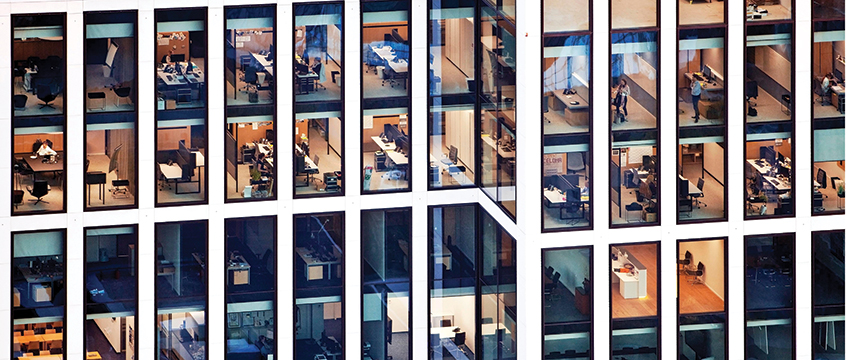Flexible workspace has average emissions of 38 units less CO2e/m2 than traditional leased offices, according to research by commercial real estate innovation company Incendium Consulting.
The flex specialist, which is part of the Instant Group, analysed data collated from 100 flex and traditional leased spaces. A comparison of carbon usage by size of workspace showed that flex can be twice as carbon intensive as conventional leased offices. However, by taking actual occupancy of space into account, the data showed that leased office space is almost three times more carbon intensive based on current occupancy levels.
Incendium said that using intensity metrics based on occupancy reflects real-world usage and subsequent emissions. The data set allows for a comparison between operating models and demonstrates that under real-world conditions the flex working model, with increased desk utilisation, is more efficient and has lower emissions.
Incendium found that flex space has average emissions of 11 units of CO2e/m2, compared with 49 units of CO2e/m2 in leased offices. And when looking at the average emissions per occupant, traditional offices produce 2,779 units of carbon, as a result of unused desks and space that no longer works efficiently in a hybrid working environment, while flexible space averages 863 units per occupant.
Sam Pickering, director at Incendium, said: “There should be far greater scrutiny placed on actual usage of workplace rather than highly theoretical models that focus on the potential of space to achieve carbon neutrality. The reality is that many desks are not being utilised on a five-days-a-week basis in the vast majority of workplaces, and therefore those theoretical models start to fall over under the realities of current occupancy.”
He added that there needs to be “greater emphasis on occupancy of space as a metric” as it “allows for a more accurate reflection of contemporary office usage”.
According to Pickering, the amount of “wasted carbon created because of underutilisation” is becoming “a significant issue for the workspace sector”, a problem which is compounded by “the increase in embodied carbon related to the piloting of new [return to work] solutions within many offices”.
He added: “Our sector is taking many of the right steps towards becoming net zero, but we must start to address the challenges that the current market context presents us with. There are clear improvements to be made for our clients, and this metric unlocks potentially a huge impact for the sector to reduce its footprint over time. We are at a junction for net zero within the workplace, and the flex sector will play an ever-increasing role in the solution.”
To send feedback, e-mail chante.bohitige@eg.co.uk or tweet @bohitige
or @EGPropertyNews











